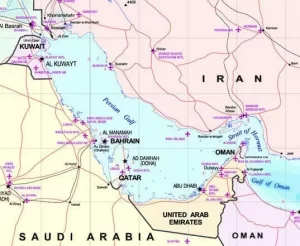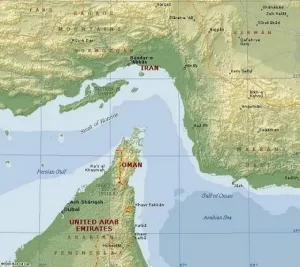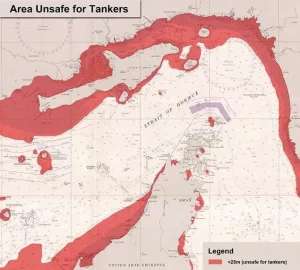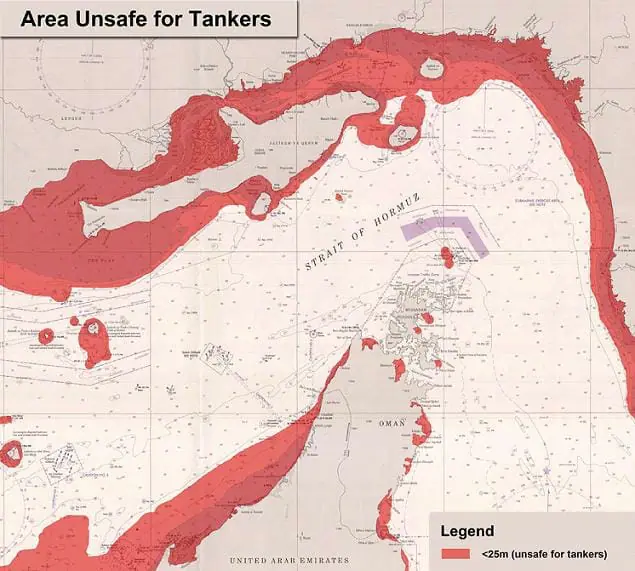
The Persian Gulf is the body of water bordering Iran, Iraq, Kuwait, Saudi Arabia, Bahrain, Qatar, United Arab Emirates, and Oman. The Persian Gulf covers area of approximately 87,000 square miles, with a maximum depth of about 330 feet and an average depth of about 115 feet.The only maritime outlet from the Persian Gulf into the Gulf of Oman, the Indian Ocean, and the rest of the world is through a narrow chokepoint, the Strait of Hormuz.
The Persian Gulf region produces nearly one third of the world’s oil and holds over half of the world’s crude oil reserves as well as a significant portion of the world’s natural gas reserves. Oil and natural gas from the Persian Gulf are exported to consumers everywhere, especially to Asia, Western Europe, and the United States.
The Strait of Hormuz is a narrow waterway that connects the Persian Gulf and the Gulf of Oman – the only passage from the oil-rich gulf to the Indian Ocean for maritime traffic. The Strait is among the world’s most important oil chokepoints. Oil tankers carry approximately 17 million barrels of oil each day through the Strait, or 20 to 30 percent of the world’s total consumption. Other outlets for oil exports from the region, such as pipelines, are limited. As such, approximately 88 percent of all oil leaving the Persian Gulf goes via the Strait of Hormuz.
The Strait itself is about 30 miles wide at the narrowest point. In order to regulate the movement of large ships in these constrained waters, the UN’s International Maritime Organization has recognized a Traffic Separation Scheme (TSS). The TSS consists of two, two-mile wide shipping lanes: one for incoming traffic and one for outgoing traffic. These two shipping lanes are separated by a two-mile buffer zone. Overall, the narrow confines of the TSS offer oil tankers and other large commercial (and military) ships very little room for maneuver and very little capability to avoid obstructions within the TSS.
However, much more of the Strait than the TSS is deep enough for even the very largest of oil tankers. As a result, for a barrier to ship traffic to disrupt the flow of oil, it would have to cross the width of the Strait not just the narrow band of the TSS.

The Strait of Hormuz is geo-strategically important to the United States, as the health of the world economy depends on the flow of oil. Many pundits and analysts, often cited by politicians and the media, fear that an Iranian attempt to close the Strait would threaten the global economy. Their implicit assumption is that Iran could stop the transit of a substantial amount of oil through the Strait for a prolonged period of time. However, as the information on this website illustrates, creating a major disruption in the Strait would be extremely difficult due to various economic, political and military forces present in the region today.
Area Unsafe for Tankers
Caption: Map that shows bathymetry of the Strait (Note: “Unsafe” for tankers indicates that the depth of the water in that area is less than 25 meters – a fully laden supertanker will have draft, or the height of the vessel below the ocean surface, of 20-25 meters). The graphic to the right shows a high-level view of the different depths of the Strait. Note that, if necessary, fully laden VLCCs could safely navigate through most of the Strait – not just the TSS.

Source: Original map taken from the University of Texas, PCL Collection
Source: strausscenter.org

